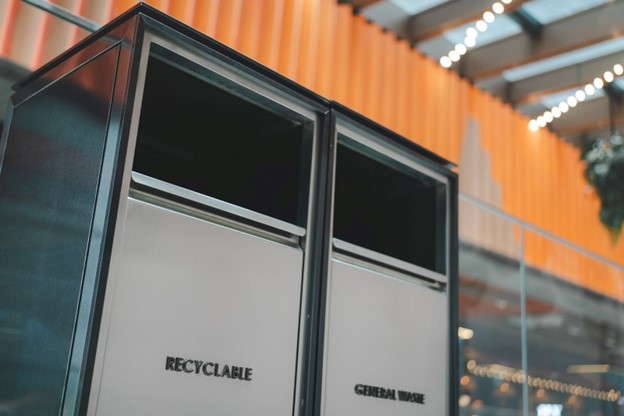Sandra Wärenhed | 2025-08-15
Effective waste management goes beyond simply collecting and disposing of trash—it requires a systematic approach that measures costs, identifies inefficiencies, and uncovers opportunities to reduce waste cost and increase recycling rates. By combining thorough records examination, facility walk-throughs, and waste sorts, organizations can gain a complete understanding of how waste is generated, handled, and managed across all departments.
This information allows you to improve operational efficiency and lower overall cost while supporting environmental goals. These results can also help deliver strategic insights on how to invest in equipment such as balers or compactors that can generate even greater savings.
Records Examination
To conduct a waste records examination, document how waste is removed from your facility and estimate total annual costs. Gather data separately for each department or contractor if practices vary.
Start by compiling annual totals for waste disposed and recyclables collected. Then record costs for labor (internal or contracted), container rentals, and removal fees—whether flat rate, per weight/volume, or per haul. Include tipping fees for landfill disposal and track recycling revenues.
For internal labor, calculate hourly rates including overhead. Capture recycling-related costs in the same detail. Finally, log purchases of recycled-content products, noting material, recycled percentage, and weight, to complete a full picture of your waste management performance.
Facility Walkthrough
A facility walk-through links waste types to their generating activities and identifies reduction opportunities. Schedule it just before trash pickup for accurate observations, avoiding holidays or special events. Inform managers in advance and interview employees for insight into waste practices, variations, and upcoming changes.
During the walk-through, focus on high-waste areas like shipping, cafeterias, and maintenance. Watch for unnecessary waste generation and existing reduction efforts. Record findings, creating one report per department if needed. This process not only documents waste sources but also engages employees in shaping a more efficient, cost-effective waste management program.
Waste Sort
To conduct a waste sort, begin by assembling a representative sample—either one day’s waste or an equivalent portion. Prepare containers for each waste category and a scale for weighing; container size should match the volume being sorted, from office baskets to large bins.
First, weigh and label each empty container. Sort the waste into major categories (e.g., paper, plastics, glass, metals, compostables, other), then divide each into subcategories (e.g., clear vs. green glass, high-grade paper vs. newspaper). Place each sorted material into its labeled container. After sorting, weigh each filled container and subtract its empty weight to find the net weight of each component.
Record all results in a report for accurate, organized data tracking.
Return on Investment
Companies using Orwak balers can measure ROI by tracking several key factors. Waste volume reduction—up to 90%—cuts the frequency of pickups and lowers disposal costs. Sorted, baled recyclables such as cardboard or plastics can be sold or collected for free, turning waste into revenue.
Operational efficiency also translates into faster waste handling; reduced in-house transport; safer, clutter-free spaces; and productivity gains. Space savings from compacted waste free up room for storage or other uses.
Environmentally speaking, balers reduce landfill contributions, enhance recycling, support ESG goals, and help meet waste regulations, avoiding fines. Companies must also factor in costs—purchase price, operating expenses, and installation—but these are often outweighed by cumulative savings, revenue, and sustainability benefits, creating a measurable positive return on investment.
Recalibrate Waste Strategies
To recalibrate waste strategies, focus first on prevention—modifying purchasing, design, and use practices to reduce waste at the source. Encourage double-sided printing, reusable mugs, and the donation of surplus goods to extend material life and cut disposal costs.
When waste is unavoidable, maximize recycling and composting by encouraging team engagement. Make available and accessible bins that are clearly labeled, and place them alongside trash receptacles. Remember to confirm that local haulers, municipal programs, or end markets can handle your materials.
Launch or refresh programs with visible leadership support, clear goals, and fun engagement tactics like challenges or recognition. Use photo-based signage to guide proper sorting and maintain consistent bin colors for clarity.
Keep participation high through ongoing communication, milestone celebrations, and alignment with events such as Earth Day. By combining prevention, reuse, recycling, and employee involvement, organizations can reduce landfill waste, save money, and strengthen sustainability performance.
A comprehensive waste management program integrates data analysis, observation, and employee engagement to maximize efficiency, cost savings, and environmental impact.
Regularly examining records, performing walk-throughs, conducting waste sorts, and recalibrating strategies ensures organizations stay proactive in reducing waste and increasing recycling.
When combined with tools including balers and clear, consistent engagement initiatives, these practices create measurable operational and financial benefits while supporting sustainability goals and regulatory compliance, helping organizations transform waste management into a strategic advantage.
—
Looking to invest in a smart baling solution?
Discover Orwak’s range of balers and compactors in our product section, designed to keep your operations clean, efficient, and sustainable.

